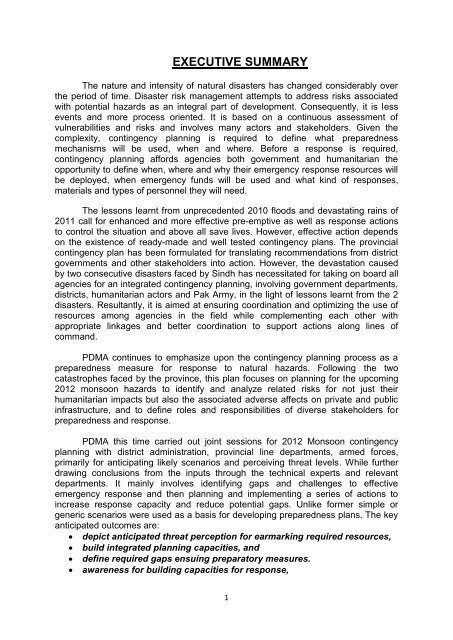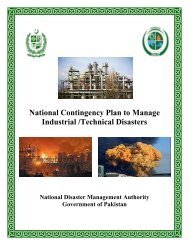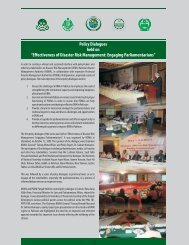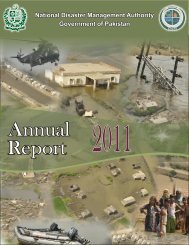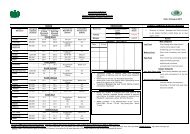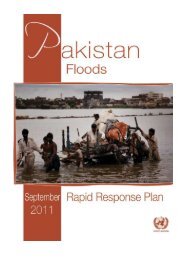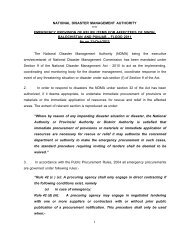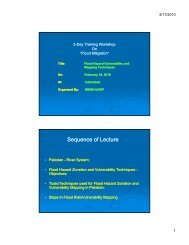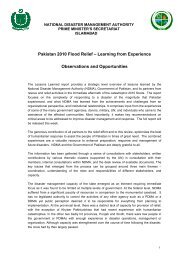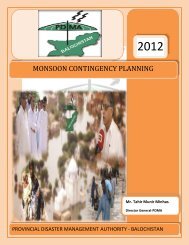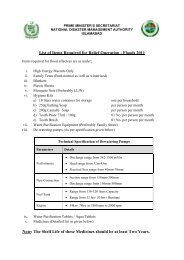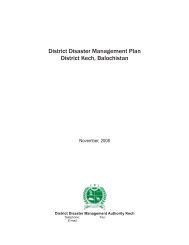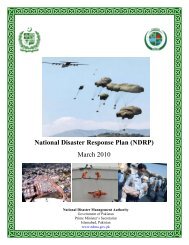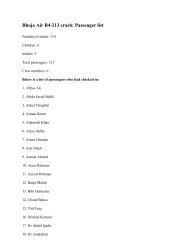Sindh - NDMA
Sindh - NDMA
Sindh - NDMA
Create successful ePaper yourself
Turn your PDF publications into a flip-book with our unique Google optimized e-Paper software.
EXECUTIVE SUMMARYThe nature and intensity of natural disasters has changed considerably overthe period of time. Disaster risk management attempts to address risks associatedwith potential hazards as an integral part of development. Consequently, it is lessevents and more process oriented. It is based on a continuous assessment ofvulnerabilities and risks and involves many actors and stakeholders. Given thecomplexity, contingency planning is required to define what preparednessmechanisms will be used, when and where. Before a response is required,contingency planning affords agencies both government and humanitarian theopportunity to define when, where and why their emergency response resources willbe deployed, when emergency funds will be used and what kind of responses,materials and types of personnel they will need.The lessons learnt from unprecedented 2010 floods and devastating rains of2011 call for enhanced and more effective pre-emptive as well as response actionsto control the situation and above all save lives. However, effective action dependson the existence of ready-made and well tested contingency plans. The provincialcontingency plan has been formulated for translating recommendations from districtgovernments and other stakeholders into action. However, the devastation causedby two consecutive disasters faced by <strong>Sindh</strong> has necessitated for taking on board allagencies for an integrated contingency planning, involving government departments,districts, humanitarian actors and Pak Army, in the light of lessons learnt from the 2disasters. Resultantly, it is aimed at ensuring coordination and optimizing the use ofresources among agencies in the field while complementing each other withappropriate linkages and better coordination to support actions along lines ofcommand.PDMA continues to emphasize upon the contingency planning process as apreparedness measure for response to natural hazards. Following the twocatastrophes faced by the province, this plan focuses on planning for the upcoming2012 monsoon hazards to identify and analyze related risks for not just theirhumanitarian impacts but also the associated adverse affects on private and publicinfrastructure, and to define roles and responsibilities of diverse stakeholders forpreparedness and response.PDMA this time carried out joint sessions for 2012 Monsoon contingencyplanning with district administration, provincial line departments, armed forces,primarily for anticipating likely scenarios and perceiving threat levels. While furtherdrawing conclusions from the inputs through the technical experts and relevantdepartments. It mainly involves identifying gaps and challenges to effectiveemergency response and then planning and implementing a series of actions toincrease response capacity and reduce potential gaps. Unlike former simple orgeneric scenarios were used as a basis for developing preparedness plans. The keyanticipated outcomes are: depict anticipated threat perception for earmarking required resources, build integrated planning capacities, and define required gaps ensuing preparatory measures. awareness for building capacities for response,1


